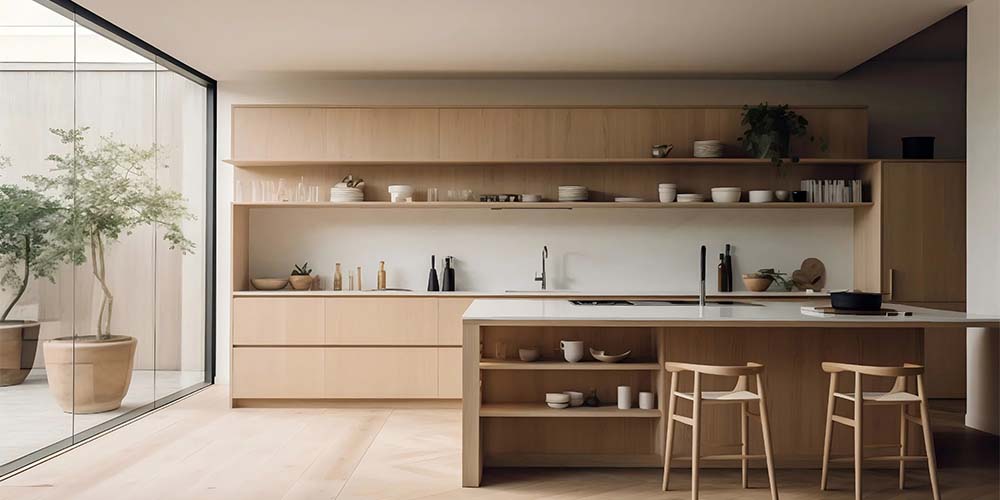Planning a bathroom vanity or kitchen cabinet project introduces a critical question: what material can survive the steam, splashes, and humidity of these demanding environments? Marine-grade plywood is often hailed as the ultimate, waterproof solution. But with its premium price tag, many homeowners and DIYers are left wondering: is it truly necessary, or is it overkill?
This guide cuts through the marketing hype to give you a practical, cost-conscious answer. We’ll explore what makes marine plywood special, when it’s worth the investment, and when a more affordable alternative will work just as well.
1. What Makes Marine Plywood “Marine Grade”?
First, it’s crucial to understand that “marine grade” is a specific standard, not just a marketing term for water-resistant plywood.
- Void-Free Core: Unlike standard plywood, which can have gaps (voids) between its inner plies, high-quality marine plywood is made with solid, knot-free veneers throughout. This prevents water from being trapped inside, which is a primary cause of delamination and rot in standard plywood.
- Waterproof Glue: It uses 100% waterproof phenolic adhesives (the same type used in exterior-grade plywood) to bond its layers. This glue won’t break down when wet.
- High-Quality Face Veneers: It typically features A-grade sanded faces with minimal defects, making it suitable for visible applications.
- Standards: True marine plywood should comply with strict standards like BS 1088, which governs its construction and durability.
Key Takeaway: Marine plywood is engineered to withstand prolonged exposure to water and humidity without delaminating or losing strength. It’s the gold standard for boat building.
2. The Case FOR Marine Plywood: When It’s Worth It
While expensive, there are scenarios where marine plywood is a justified investment for damp interiors.
- Direct Water Exposure: The strongest case for using marine plywood is in applications where it might see standing water or constant, direct wetness. Examples include:
- Steam Room or Sauna Benches and Walls
- A custom shower seat or niche (though these are often better built ith other materials like cement board)
- Outdoor Kitchen Cabinets that will be fully exposed to the elements.
- Ultra-High Humidity & Peace of Mind: If you live in an extremely humid climate and are building a large, expensive built-in unit, the extra cost of marine plywood can buy invaluable peace of mind against future rot and failure.
- Structural Integrity When Wet: Even if it gets soaked, marine plywood will retain its structural strength far better than any other wood-based panel product.
3. The Case AGAINST: Cost-Effective Alternatives
For the vast majority of standard bathroom and kitchen projects, marine plywood is unnecessary. Here’s why and what to use instead.
- The High Cost: Marine plywood can be 2 to 3 times more expensive than standard cabinet-grade plywood. This cost is difficult to justify for the inside of a cabinet box that will only see ambient humidity and the occasional splash.
- It’s Water-Resistant, Not Waterproof: A crucial distinction. While its glue is waterproof and its core is solid, the wood veneers themselves can still absorb moisture and be damaged by mold or rot if not properly sealed. You still must finish it!
- Excellent Alternatives Exist: For 99% of bathroom vanities and kitchen cabinets, a much more budget-friendly option will perform perfectly:
- Exterior-Grade Plywood: Uses the same waterproof phenolic glue as marine plywood. Its main difference is that it may have some internal voids and lower-grade face veneers. For cabinet carcasses that will be painted and sealed, this is often more than sufficient.
- Moisture-Resistant MDF (MR MDF): An excellent choice for cabinet doors and panels in bathrooms and kitchens. It’s designed to handle humidity and won’t warp like solid wood can. It must be completely sealed with primer and paint on all sides and edges.
- Proper Sealing is Key: Any plywood—even marine—must be thoroughly sealed with a high-quality primer and paint or a waterproof veneer. A well-sealed piece of exterior-grade plywood will outperform an unsealed piece of marine plywood every time.
Final Verdict: Do You Need It?
Probably not. For most bathroom vanities and kitchen cabinets, the extreme cost of marine plywood is hard to justify.
- Use Marine Plywood for: Custom shower builds, saunas, outdoor kitchen bases, or any project where the wood will be structurally critical and subject to direct, constant water exposure.
- Use Exterior-Grade Plywood or MR MDF for: Standard bathroom vanity carcasses, kitchen cabinet boxes, and shelves. Seal all edges and surfaces meticulously with a quality primer and paint, and you will have a durable, long-lasting product that can easily handle the humidity of a home environment.
Pro Tip: The most common point of failure is not the plywood itself, but the raw, unsealed edges. Whether you choose marine or exterior-grade, sealing the edges with wood glue, edge banding, or primer is the single most important step for ensuring longevity.
Post time: Sep-05-2025





